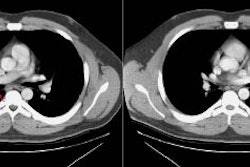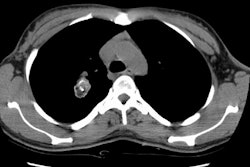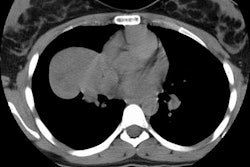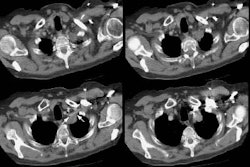Bronchioloalveolar carcinoma: clinical, histopathologic, and radiologic
findings.
Lee KS, Kim Y, Han J, Ko EJ, Park CK, Primack SL
Bronchioloalveolar carcinoma is characterized pathologically by a pulmonary
neoplasm showing lepidic growth. More than
half of all patients with bronchioloalveolar carcinoma are asymptomatic.
The most frequent symptoms and signs are cough,
sputum, shortness of breath, weight loss, hemoptysis, and fever. Bronchorrhea
is unusual and a late manifestation.
Nonmucinous bronchioloalveolar carcinoma tends to be more localized
and has a lower frequency of bronchogenic spread
than mucinous bronchioloalveolar carcinoma. Bronchioloalveolar carcinoma
appears radiographically as a single nodule,
segmental or lobar consolidation, or diffuse nodules. At computed tomography
(CT), the single nodular form appears as a
peripheral nodule or localized ground-glass attenuation with or without
consolidation, frequently associated with bubblelike
areas of low attenuation and open bronchus signs. The lobar consolidative
form may demonstrate the CT angiogram and
open bronchus signs. The diffuse nodular form appears as multiple nodules
or areas of ground-glass attenuation or
consolidation. The single nodular form has a better prognosis than
the others but may show false-negative results for
malignancy at 2-(fluorine-18) fluoro-2-deoxy-D-glucose positron emission
tomography.



